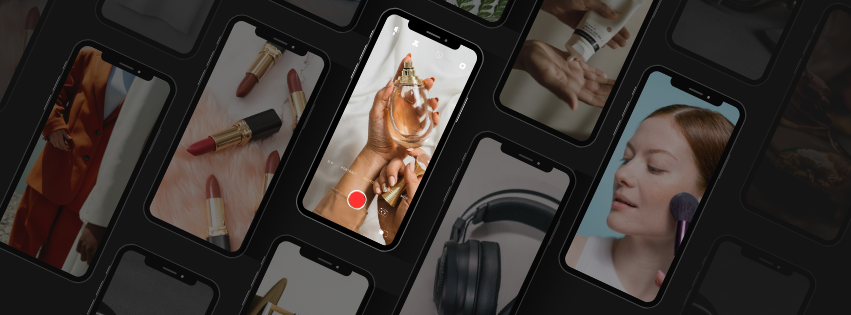
Micro-Influencers Are Taking Over MENA—Here’s Why Your Brand Should Too
Influencers Marketing has taken the MENA region by storm, but it’s not the mega-influencers or celebrities leading the charge. Instead, micro-influencers – those with niche followings between 10,000 and 100,000 – are becoming the go-to partners for brands. But what’s driving this trend, and why are micro-influencers outperforming their more famous counterparts?
Let’s break it down.
Micro-Influencers vs. Macro-Influencers: The Cost Advantage
When brands think about influencer marketing, the initial instinct might be to go big – collaborating with major names to generate buzz. But while that buzz might be flashy, it’s also expensive.
Working with macro- or mega-influencers comes with a price tag. These influencers often charge thousands, if not tens of thousands, for a single post. For small to medium-sized businesses, this can quickly exhaust marketing budgets for just one piece of content.
On the flip side, micro-influencers are much more affordable. Brands can stretch their budget further by collaborating with multiple micro-influencers. This allows businesses to consistently reach a wider audience over time instead of placing all their eggs in one basket.
Demand and Accessibility
Here’s where things get even more interesting. The more followers an influencer has, the higher the demand for their time and collaboration. Many companies, especially larger ones, are vying for their attention. As a result, macro-influencers become less accessible to small to medium-sized businesses.
In contrast, micro-influencers aren’t bombarded with requests, meaning they’re often more flexible and open to partnerships. Plus, because they’re still growing their audiences, they tend to go the extra mile to impress both the brand and their followers. This level of personal attention often leads to more authentic and impactful collaborations.
Authenticity is King in MENA
In a region where cultural relevance and personal connections matter, authenticity is a huge factor. As macro-influencers partner with more brands, their content can start to feel like it’s driven purely by profit. This can cause their followers to become skeptical, leading to influencer fatigue. People stop trusting recommendations that seem more like business deals than genuine endorsements.
Micro-influencers, however, maintain closer, more personal relationships with their followers. Their audience views them as relatable and trustworthy, making their recommendations feel more authentic. This is particularly important in the MENA region, where consumers place a premium on personal connections and trust in the brands they engage with.
Engagement: The Power of Small Communities
You might think that more followers equals more engagement. Surprisingly, that’s not always the case. In fact, micro-influencers often have significantly higher engagement rates than their more famous peers.
Studies have shown that micro-influencers can have engagement rates of 2-3%, while macro-influencers hover around 1%. That’s because micro-influencers can engage with their audience on a personal level, responding to comments and fostering real conversations. In the MENA region, where social media plays a key role in daily life, this kind of interaction can create deeper brand loyalty.
On platforms like Instagram, TikTok, and YouTube, micro-influencers in MENA are leading the way with engagement rates that outperform global averages. For example, micro-influencers on TikTok boast an average engagement rate of 17.96%, compared to just 4.96% for mega-influencers. Instagram is 3.86% compared to 1.21% for mega-influencers and YouTube is 1.64% vs. 0.37%
Statistics Don’t Lie: Micro-Influencers Dominate the Market
According to data, nearly half (47.3%) of all content creators globally are micro-influencers, making them the largest group among influencers. As the demand for authentic content continues to rise, more brands in MENA are shifting their marketing dollars toward these smaller creators.
In fact, 90% of marketers now prefer to work with micro-influencers.
MENA’s Unique Take on Influencer Marketing
A report highlights that 63% of MENA influencers post more about causes they care about.
Influencers in MENA are increasingly selective about the brands they work with, often considering a brand’s values and how they resonate with Arab culture. This makes finding the right micro-influencers even more crucial for brands looking to tap into the region’s market.
In short, bigger isn’t always better. When it comes to influencer marketing in the MENA region, sometimes less truly is more. So, if you’re looking to make a lasting impact with your marketing efforts, micro-influencers might just be your new best friends.
The Rise of Social Media in MENA
Did you know that 9 out of 10 Arabs use at least one social media platform daily? With such a high level of connectivity, it’s no surprise that influencer marketing is an essential strategy for brands looking to connect with consumers in this region.
But here’s where it gets interesting: MENA’s influencer marketing scene is different from Western markets. The cultural landscape, coupled with the preferences of the audience, makes for a distinct dynamic. Brands need to be more thoughtful about how they approach the market if they want to succeed.
The TikTok Explosion
TikTok is leading the charge in the MENA creator economy. Since 2019, it’s been impossible to ignore the rapid rise of TikTok, especially in countries like the UAE and Saudi Arabia.
The platform is more than just a place for Gen Z and dance challenges. In fact, 36% of TikTok users in MENA are over 30, and the power of TikTok to drive sales is undeniable.
Millennials in the MENA region turn to social media for brand discovery, and influencers are their go-to source for recommendations. Women between the ages of 18 and 24, in particular, are highly influenced by the products and brands they see promoted online.
73% of consumers made a purchase after seeing an influencer mention a product.
Whether it’s on Instagram, TikTok, or YouTube, MENA micro-influencers consistently outperform macro-influencers when it comes to engagement. By partnering with these creators, brands can reach their target audiences in a meaningful, authentic way, while staying within budget.
Feel free to connect with us at +971556911030 or via [email protected] for international/local projects

